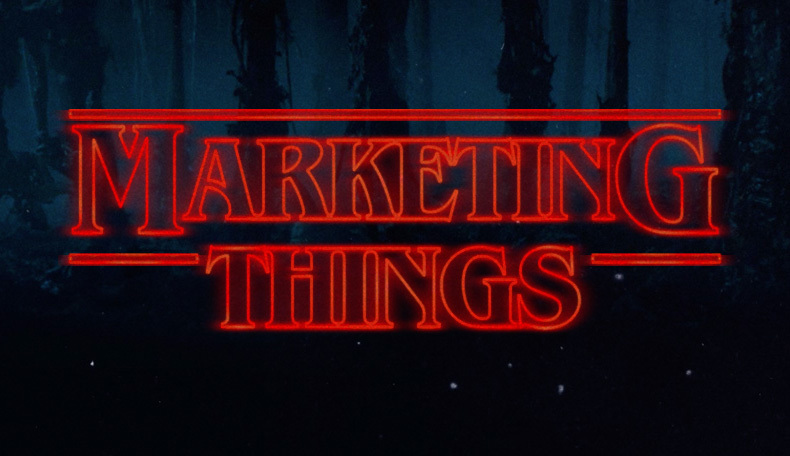Marketing Insights
I was born in 1981. Some sources say that makes me a skeptical, logical Gen Xer, while others label me a conscientious, adaptive millennial. This kind of thing is a real problem for brand marketers who want to reach potentially lucrative 30-somethings, yet risk crafting an irrelevant or even tone-deaf message by lumping them in with millennials who just voted in their first election.
How should we solve this horrible quandary? Simple: we create a microgeneration!
Meet the Xennials, headstrong 30-somethings who never asked anyone to put them in a box. Who know they need to work out but also work late because they want to advance in their career. Who dream about tropical vacations yet hesitate to spend the money they saved to buy a nice house or take care of their aging parents. Who want to buy healthy food for their children but secretly wonder if organic produce really lives up to the hype.
That’s the classic internal struggle for people born between 1977-1983 — millions of consumers with incredible purchasing power who, together, make up what might just be the most misunderstood audience in the world.
What the heck is a Xennial, anyway?
By definition, this microgeneration is stuck in the middle.
Xennials remember and acknowledge a time before the adoption of modern technology, yet in many ways, we operate in the digital world almost as easily as our nieces and nephews who played with their parents’ smartphones instead of plastic rattles. We remember pagers, but we own the latest iPhone.
We grew up on Popples and Smurfs and singing chipmunks. We battled Goombas and Koopa Troopas and fire-breathing piranha plants for control of colorful, 8-bit worlds. Decades later, sentimental hallmarks of the ’80s and ’90s are making a comeback in media, yielding Netflix series and movie remakes and vintage gaming systems sales.
Today, we watch “Stranger Things” because it reminds us of our childhood: we had video games and TV for rainy days, but we mostly built forts in the woods and rode our bikes on secret adventures. Our parents embraced a pervasive, pre-internet trust in the world, and they didn’t just grant us freedom to roam — they encouraged it. I can still hear my mother’s voice: Go outside. Run and play. Make your own fun. Just come back before we turn out the porch light.
Xennials operate with one foot planted firmly in each world.
What kind of marketing works on Xennials?
Because we straddle two generations, Xennials react poorly to being placed in a box. Boxes create cognitive dissonance and make us less apt to listen at an age where we just want marketers to “get us.”
To give Xennials what they want (and thus what you want), listen first. Understand life stage nuances and values and fears. What issues are they wrestling? Are they parents of young children? Are they caring for their aging parents? Can technology solve their problems? When marketers take time to understand this generation, or any generation, they make it easier to make choices. And, by keeping it real, they form an emotional connection.
Did you see the Luvs second mom campaign a couple of years ago? Made to sell diapers, it was successful because it focused not on the product, but on showing life truths, even the messy ones. In it, the first-time mom cleans up every mess and divides every meal into perfect portions. By the time the second kid comes, though, she’s holding her toddler in one arm and scooping up Cheerios in the other. Do you know what I said when I saw that campaign? I said, you totally get it, guys. You understand my beautiful, chaotic, imperfect life. You recognized its ugly warts, and you weren’t afraid to show them.
This gets at exactly what grabs Xennial hearts. Brands that say, “We are investing in you. We’re doing things to make your life less complicated.” Brands that understand we still want to read real books and shop in real stores, even if we grew up using computers. Brands that get the fluidity of the omnichannel experience — that understand their customers might buy window treatments in person, even if they start on Pinterest to figure out what they like. Brands that make faucets as elegant as they are durable and functional; chic flats that are comfortable and washable; beautiful blinds made to stand up to the abuses of our kids and pets; quality razors delivered to our door for a reasonable price.
With that said …
Beware the danger of making broad brushstrokes.
Broad brushstrokes are dangerous. Stereotypes create clear differences where there are no meaningful differences and ignore what we have in common. This is true for all generations but particularly for millennials, the little brothers and sisters of Xennials, because marketers love to make a big deal of them.
As marketers, we have to stop stuffing everyone into a generational box. We have to, instead, think about what’s important to people — what drives them. And the answers might not exist in these uber-specific generations, but rather where they overlap. After all, how much does a 35-year-old millennial really have in common with an 18-year-old millennial?
Viewing consumers by their life stage, rather than their age, is one way to think about all of this. For example, a 25-year-old homeowner probably looks more like a 45-year-old homeowner than a 25-year-old renter.
If you want to win the hearts of Xennials (or our children, siblings or parents), invest time and resources to really understand our point of view. Do some social listening. Sit down with us. Hear what we have to say.
Just don’t call us millennials.

